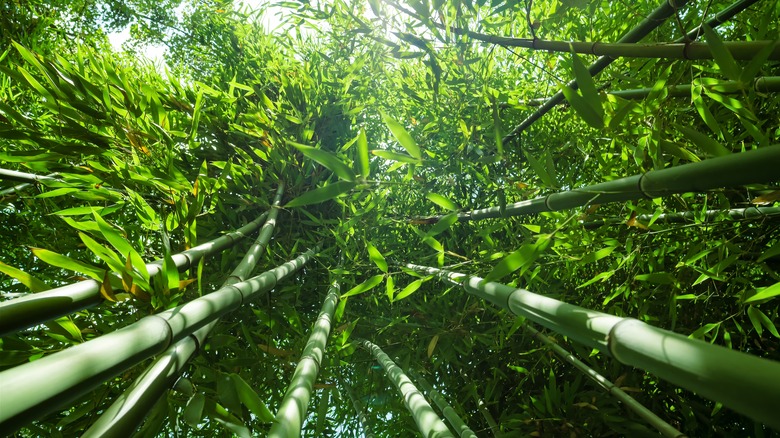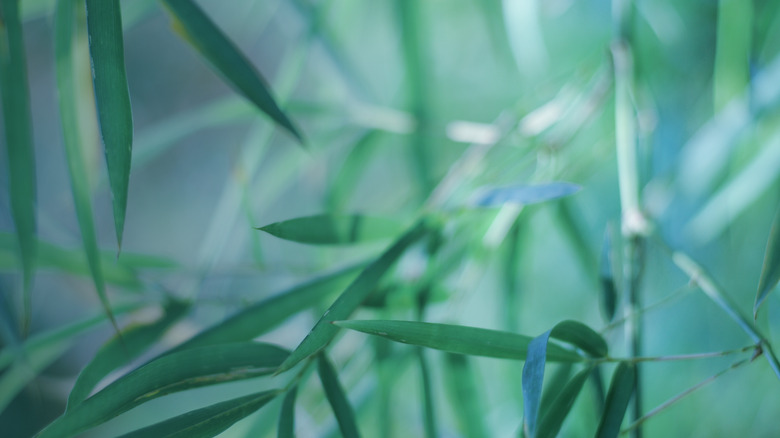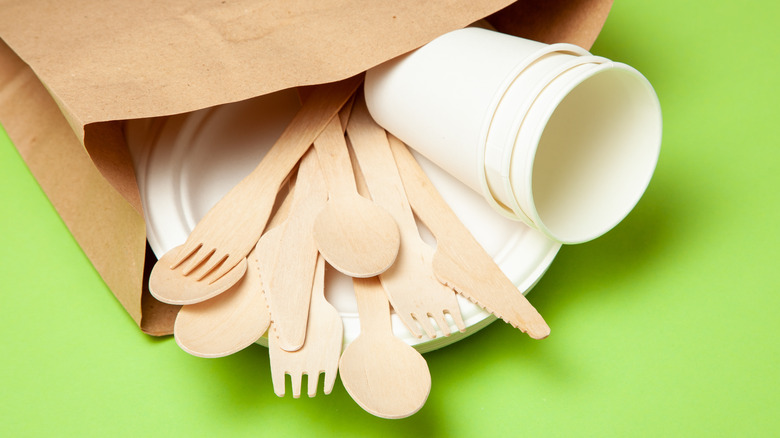Bamboo Grows At Such An Alarming Rate That It's Often Measured In Miles Per Hour
As a kid, you might have heard of bamboo torture: a skin-crawling punishment that involves suspending someone on a piece of netting above bamboo plants, the tips of which are sharpened into spikes. As they grow, the plants will slowly and agonizingly pierce the body of the victim.
But how is this possible? Sure, it sounds good in theory, but no plant actually grows fast enough and with enough force to pierce skin, right? Wrong. Bamboo is the fastest-growing plant on Earth, according to Guinness World Records. It grows fast enough that theoretically, it could be used to torture people. or at the very least, fast enough to pierce a stationary human body (via All That's Interesting). Whether or not it was actually used remains up for debate (and there's no evidence it was used during World War II, as many people have suggested), but this fact certainly speaks to the sheer speed of the bamboo plant. Because it is quite speedy — so speedy its growth rate is sometimes measured in miles per hour.
The unique biology of the bamboo plant
When you think about speedy things, plants are just about last on the list. But bamboo really is quick: It grows at a rate of 91 centimeters per day, or nearly three feet, according to Reel Paper. That insane rate means that an entire bamboo forest can grow from nothing into a full-fledged woods within three to four months of planting.
In fact, this growth rate is so high that some scientists have taken it upon themselves to develop a new measuring system. Feet per day isn't enough: Some people use miles per hour to describe the growth rate of bamboo. By this yardstick, some species come in at around 0.00002 miles per hour according to the Guinness World Records, or 0.00048 miles per day — around 0.1752 miles a year.
There are some 1,400 different species of the plant worldwide, according to Britannica, and these species can vary widely in size. While some only grow to be about as long as your hand, others can reach a massive 130 feet — about the height of a 12 story building. Talk about tall!
Uses for bamboo
Lest you think all of this bamboo can't be used for anything but torture, bamboo actually has a ton of real-life applications, including some that might be able to help save the planet.
First and foremost, bamboo can be eaten. Both its seeds and stalks are edible, per Britannica, and its leaves can be fed to animals. Additionally, bamboo can be used for building materials or as a decorative plant, but most importantly, the pulp of the bamboo plant can be used to create paper.
Bamboo grows much more rapidly than trees, meaning, per square acreage, bamboo plants can churn out a lot more paper than wooded forests, according to Reel Paper. Moreover, other features of the bamboo plant make it a more sustainable source of paper than trees. For instance, it causes less soil erosion than traditional forests and can actually remove toxic contaminants from the dirt in which it's planted. You can also harvest bamboo from the same plant indefinitely, eliminating the need to constantly be replanting.
Finally, bamboo is more financially beneficial than trees, since it can be harvested more often, creating a steadier stream of income. Overall, this means that in the future, if enough people hop on the bamboo bandwagon, we might find our notebooks, posters, and tissue papers are made of bamboo instead of trees.


